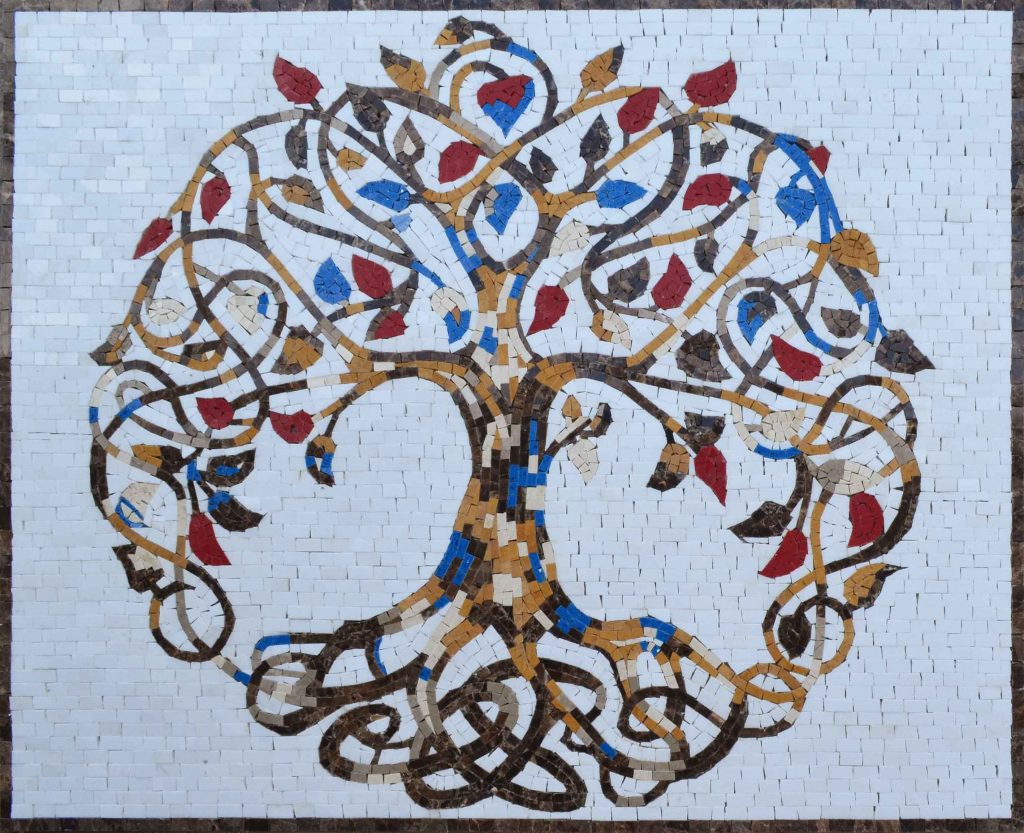An 1800-Year-Old Mosaic’s Big Reveal

An 1800-year old mosaic is now on display in Amasya, Turkey, proving that some things just don’t age! The art, showing an apple tree, is also a timeless motif for this beautiful area. Close to the Black Sea, the Amasya Province is not only a popular tourist destination but also a big apple-producing region.

There’s even a famous local Amasya apple, as shown below. This gold and red variety is old, tasty, and exported widely. So, before you plan your trip to Turkey, let’s answer the big question: What do heritage apples and big mosaic history reveals have in common?

As we’ve talked about in previous blogs, there are many exciting archaeological finds in Turkey that include mosaic art. The largest mosaic art museum in Gaziantep is one of our recommended mosaic-art-rich travel destinations, with 90,000 SF of exhibits. The Zeugma Museum showcases breathtaking,huge pieces that look almost new.

Similarly, an excavation at the site of an old chapel in the Amasya Province has yielded nearly pristine Roman-age treasures. First, excavators found a floor with an intricate mosaic pattern. The resulting design looks incredibly like a kilim-style rug. The colors are vivid, and the patterns are meaningful, believe scholars.
The ancient village site, located in nearby Yavru, was originally explored in 2014 after authorities seized control of an illegal excavation. Although the buildings where the mosaics were found were definitely once chapels, their early history holds more clues to the art.

It’s believed that a wealthy Roman landowner and farmer once owned the land in the late 3rd century. His palatial home was eventually abandoned and then converted into a church. And, the designs were quite different. The mosaics that had been found in palace-like rooms had a different design when compared to the other artifacts in the same era. Looking closely at the restored artifacts, you’ll see intricate chevrons, waves, complicated grids, and more. They also were surrounded by curbstones.
The crown jewel of the excavation was the discovery of a 20 square meter wide mosaic design in the next room. In the center is a 1.5 square meter apple tree, looking just as fresh as the red and gold local apple variety grown today in the valley’s orchards. The main difference, of course, is that 1800 years have passed since the floor was created!

Surrounding the tree are three partridges, and yet more mysterious and complicated mosaic patterns. Although the meanings of the shapes and images are lost in time, it’s believed that some of the patterns represent a Roman military coat of arms. The tree and partridges are likely to be an early Christian symbol.
Now the Amasya Archeology Museum has its own apple-themed masterpiece on display, linking past and present beautifully. The museum completed restoration and revealed the refreshed mosaic art to the public this year. The town is now prepared to welcome even more visitors, as newcomers discover the wealth of history, archaeological finds, and yes, heirloom apple varieties in the area.
The longevity and durability of mosaic art are incredible. Thanks to excavations in sites like Pompeii, Zeugma, and Verona, we’ve learned so much about ancient civilizations – as well as about how long mosaic tile lasts!
If you’re looking for beautiful art that will last and continue to look like new, mosaic is unrivaled. Why not try it for yourself, perhaps with a depiction of your favorite tree from our vast selection?











